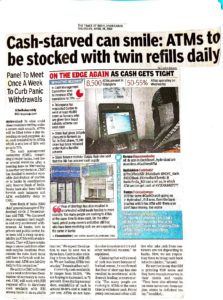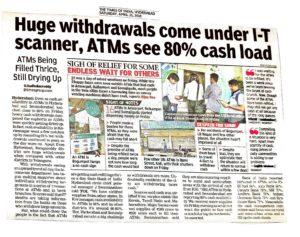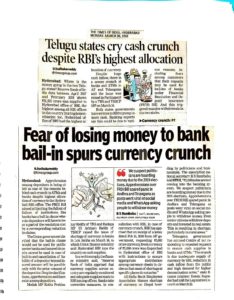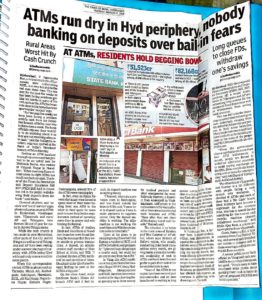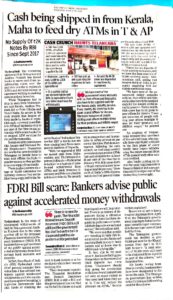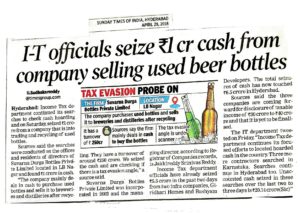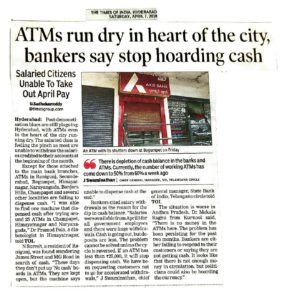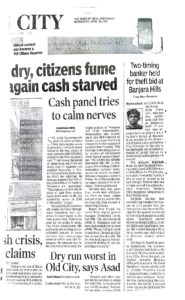Cash Crunch
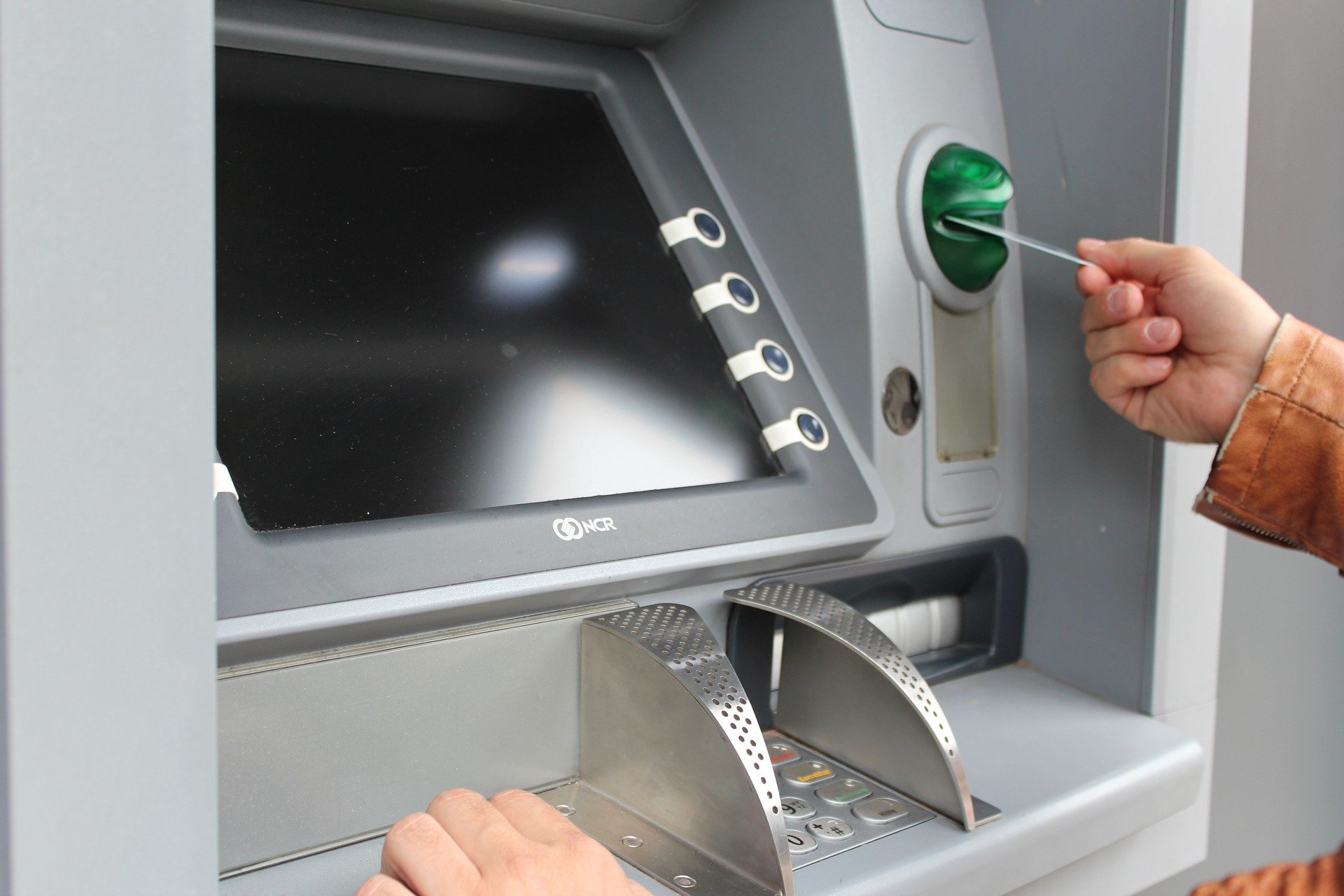
Fear of Legislation Drives Cash Crunch
In 2018, post-demonetisation blues extended to ATMs in Hyderabad and they ran dry. People stood for hours in front of ATMs for little cash. Sudhakar was one of the first reporters in the city who began to warn people of the dwindling cash inflows into the city. The condition had turned dire that had brought upon panic among the people and the Centre had to intervene by printing more Rs 500 bills. The Centre’s new Rs 2,000 currency was yet to reach people due to delay in printing.
One of the main reasons for the cash crunch, as reported, was due to depositors acting on their apprehensions that their deposits are in danger from the bail-in clause of the Financial Resolution and Deposit Insurance (FRDI) Bill. Illegal hoarding by politicians and business persons was also stated as a reason. Sudhakar took a tour of all the affected areas in Hyderabad and spoke to many about the problems they were facing. He travelled to rural areas too to report the situation from there.
The Income Tax department raided many private and commercial establishments where cash was being hoarded during the cash crunch. Sudhakar wrote about the hurdles the banks are facing in filing up the machines and the problems that arise when ATMs shut down. The worst affected by the cash crunch were the farmers, the daily wage workers, and beneficiaries of various government schemes. Sudhakar wrote about SBI’s efforts in airlifting cash from Kochi, Chennai, Mumbai and Bhubaneswar. The data showed that around 48% of 8,500 ATMs in Telangana were either shut or dry.
After the cash crunch was handled, Sudhakar followed up on the situation by reporting about heavy withdrawals in certain areas that caught the attention of the Income Tax department.
